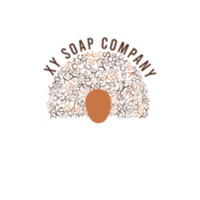You know, for someone who doesn't drink coffee, I sure do find myself surrounded by it! My coffee-loving friends used to lug their coffee makers to my place when they visited. "Used to," I say, because I've now invested in a "visitor's" coffee maker. It's truly for them, though I have to admit, I'm always captivated by the aroma and fascinated by each person's unique ritual for brewing their perfect cup of Joe.
When I decided to specialize in exfoliating soap, my creative mind went into absolute overdrive! I couldn't believe the sheer number of exfoliant options out there. I was pulling common items from my pantry, grinding eggshells, and even scouring craft stores for anything that could potentially buff skin. While some exfoliants quickly became favorites for both me and my customers, one kept reappearing in my research for cold process soap: coffee. Its benefits seemed to be a recurring theme, and I was absolutely fascinated.
Why Coffee Grounds for Soap?
Turns out, coffee grounds are pretty amazing for your skin:
- Exfoliation: They gently remove dead skin cells, helping reveal smoother, healthier skin underneath.
- Natural Ingredient: It doesn't get much more natural than coffee grounds, a readily available and effective exfoliant.
- Subtle Scent: Beyond the visual, coffee grounds can impart a lovely, subtle coffee aroma to the finished soap.
- Natural Color: They also contribute a beautiful, natural, earthy color to the soap.
- Antioxidants: Coffee contains antioxidants, which can help protect your skin from environmental damage.
I was practically counting down the days until my next visitor, just so I'd have an excuse to make my coffee soap!
Now, because this is my soap-making journey, I'm going to share a little secret (and a misstep or two!). When making cold process soap, I always use distilled water to eliminate any unwanted minerals or chemicals that might be in tap water. My coffee-drinking friends, naturally, don't use distilled water for their daily brew. So, despite waiting for a visitor, I was graciously (and with lots of giggles from my friends) taught how to steep coffee grounds with a small amount of distilled water. After all, I wasn't aiming for a perfect cup of coffee; I just needed those beautifully wet grounds!
After steeping, I gently wring out the excess water, and when the time is right in my soap-making process, I add the wet grounds to my soap batter. The rest is pretty standard for most of my soaps: pour the batter into the mold, cover it for 48 hours, unmold the loaf, cut it into individual bars, and then let them cure for six long weeks.
I did try putting whole coffee beans on top for "aesthetic" appeal once. But those suckers kept falling off and were a nightmare for my soap cutter! Experience has taught me to mark my mold and press the beans deeper into the batter. Honestly, while it might look pretty, it's just not practical. Those beans aren't going to wash down the drain, so they're essentially just extra waste that could have gone into the grinder. Sometimes, practicality wins over pure aesthetics in the soap studio!
What are some unexpected ingredients you've found yourself experimenting with in your hobbies? I'd love to hear about it!




